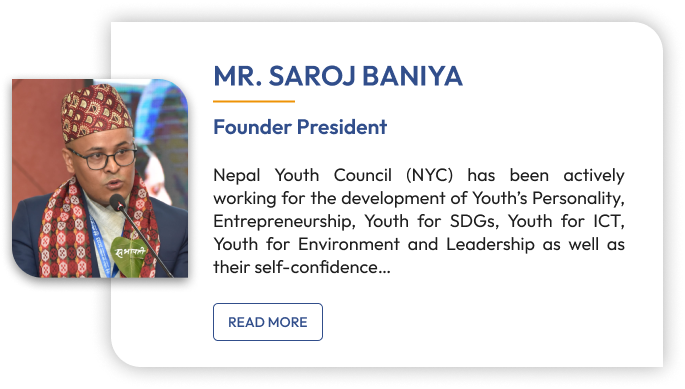NEPAL YOUTH COUNCIL
YOUTH ENTREPRENEURSHIP FOR PROSPEROUS NATION: SDGS IN EQUAL INCLUSION
“उद्यमी युवा समृद्ध देशः दिगो विकास लक्ष्यमा समान परिबेश“
NEPAL YOUTH COUNCIL
Nepal Youth Council Nepal (NYC) has been actively working for the development of youth’s Personality, Entrepreneurship, SDGs and Youths Leadership as well as building their self-confidence by providing training with various skills to make them independent for a long time. Having experience of more than 8 years, NYC has strong social visibility as well. We have access to 77 districts, and it has a strong network in each province with the enthusiastic province coordinators.
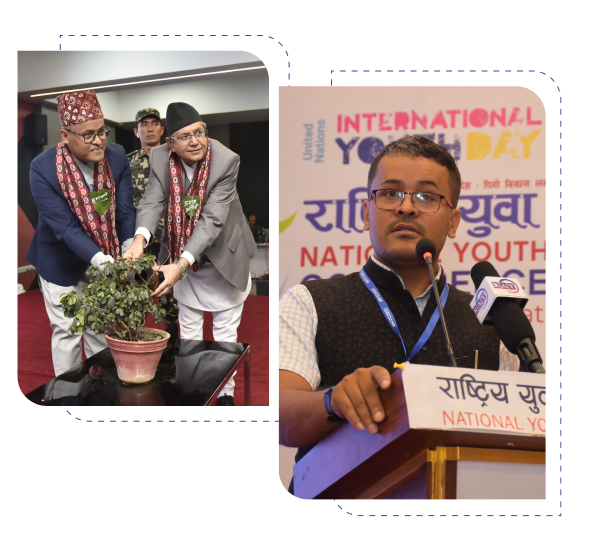
Our Impact
THEMATIC AREA

YOUTH FOR ICT
Nepal comprises over 40 percent of youths out of their…

YOUTH ENTREPRENERSHIP
Entrepreneurship refers to the process of creating a new..

GENDER EQUALITY AND...
Nepal is a multilingual, multicultural country rich in different languages…

YOUTH FOR SDGS
The Sustainable Development Goals (#SDGs), also known as the Global…

YOUTH FOR ENVIRONMENT
As we walk on the streets of Kathmandu city, it’s…

YOUTH FOR ELECTION
Nepal is a multiparty democratic country, where youths have a…
MESSAGE FROM THE FOUNDER I PRESIDENT
OUR COVERAGE
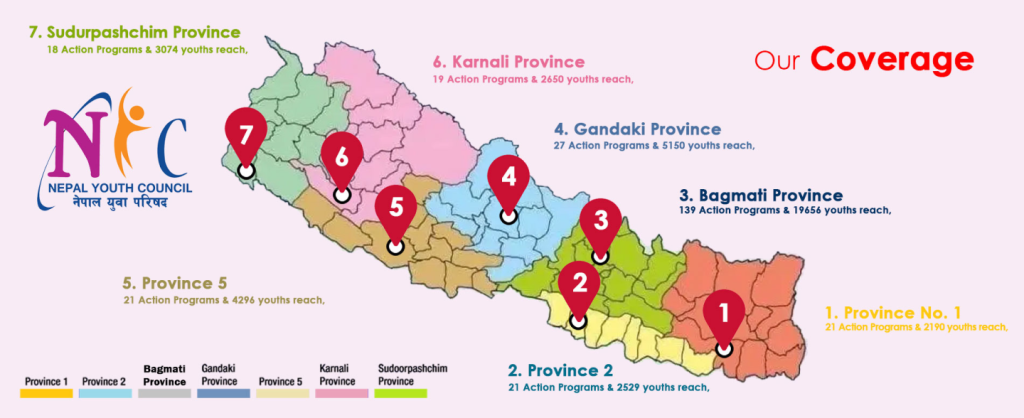
GALLERY
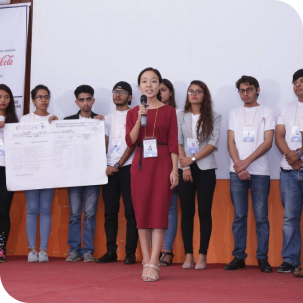
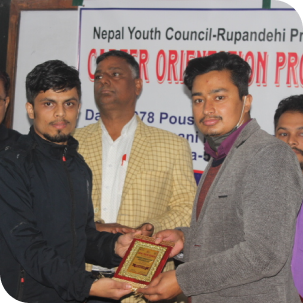
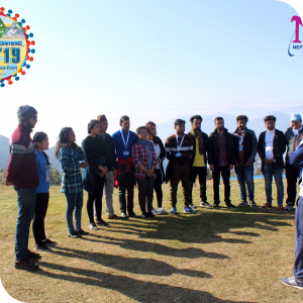
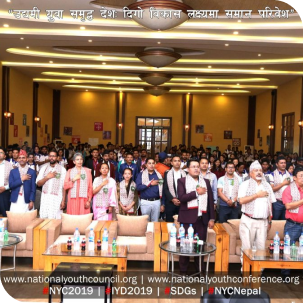
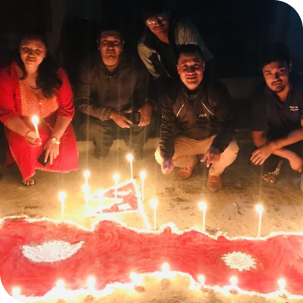
OUR TEAM

Mr. Saroj Baniya
PRESIDENT FOUNDER
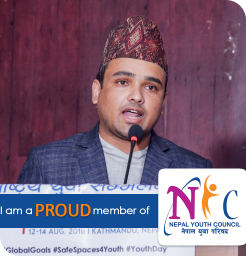
Mr. Shudarsan Bidari
VICE PRESIDNET

Ms. Rachana Kharel
GENERAL SECRETARY
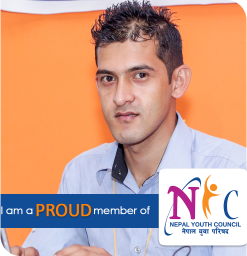
Mr. Shree K. Budhathoki
TREASURER
UPCOMING EVENTS
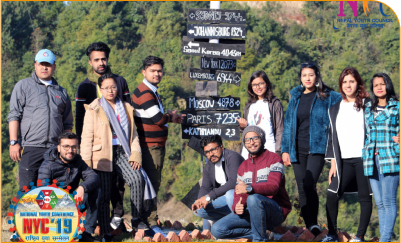
3 MAR 2023
National Youth Council Visit Nepal 2022
Amet minim mollit non deserunt ullamco est sit aliq dolor do amet sint. Velit officia consequat duis enim velit mollit Velit officia consequat duis enim liqua tin duis enim nim liqua tin duis…
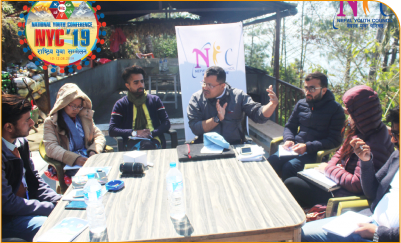
3 MAR 2023
National Youth Council Visit Nepal 2022
Amet minim mollit non deserunt ullamco est sit aliq dolor do amet sint. Velit officia consequat duis enim velit mollit Velit officia consequat duis enim liqua tin duis enim nim liqua tin duis…
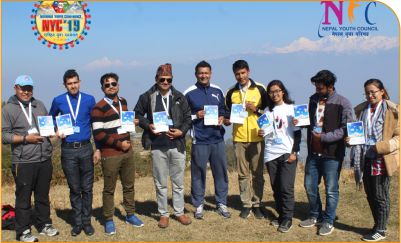
3 MAR 2023
National Youth Council Visit Nepal 2022
Amet minim mollit non deserunt ullamco est sit aliq dolor do amet sint. Velit officia consequat duis enim velit mollit Velit officia consequat duis enim liqua tin duis enim nim liqua tin duis…
RECENT FORM YOUTUBE CHANNEL
National Youth
Council (NYC)
We are in youtube. Please subscribe to know more about our recent activities.
BLOGS
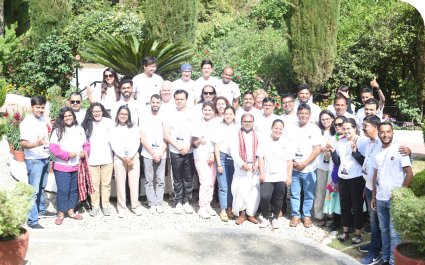
MasterPeace Asian Bootcamp 2023: A Gathering Of Changemakers To Create A Peaceful Future
The MasterPeace Asian Bootcamp 2023 was an inspiring and transformative event that brought together passionate changemakers from around the world. Held in Nepal,
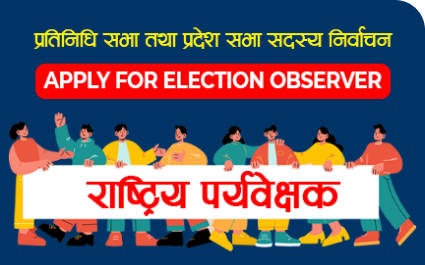
प्रतिनिधि सभा तथा प्रदेश सभा २०७९ – राष्ट्रिय पर्यवेक्षक
नेपाल युवा परिषदले “प्रतिनिधि सभा र प्रदेश सभा निर्वाचन–२०७९” ७७
वटै जिल्लाहरुमा करिब ४५० भन्दा बढी युवाहरुलाई निर्वाचन आयोगसँगको
सहकार्यमा प्रतिनिधि सभा र प्रदेश सभा निर्वाचन–२०७९ निर्वाचन पर्यवेक्षकको
रुपमा परिचालित गर्न लागिएको हो ।
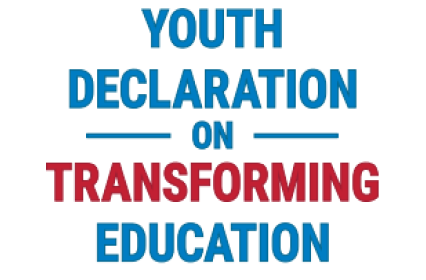
Youth Declaration On Transforming Education
The MasterPeace Asian Bootcamp 2023 was an inspiring and transformative event that brought together passionate changemakers from around the world. Held in Nepal,

